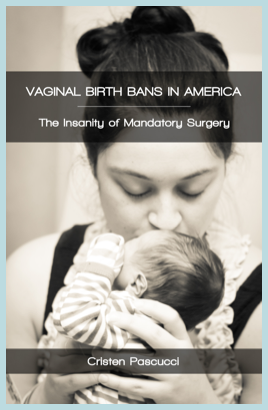Sign up for my email list
(and like the Facebook page while you’re there!)
The Birth of Birth Monopoly
For a while now, I’ve been studying the maternity care system in the U.S. and speaking to women from all over the country about their experiences, the challenges they face, and the options available to them.
A lot doesn’t add up in this multi-billion-dollar-a-year industry. For one thing, there are extreme variations in Cesarean rates – a rough indicator of quality of care – around the country. A woman in Utah has a 22.6% chance of a Cesarean, while a woman in Louisiana has a 40% chance. In my home state of Kentucky, one hospital has a Cesarean rate of less than 12%, while another is over 67%. It’s really not that surprising when you realize that practices differ from facility to facility from medieval to most current.
And options? One woman in America might have the options of several amazing OBs who practice at hospitals that respect her right to make decisions about her birth; several top-notch homebirth midwives who have great working relationships with the medical community; and even a birth center within driving distance.
Another woman might face a hospital with a 50%+ Cesarean rate and a reputation as an “assembly line”; no doctor willing to look seriously at her birth plan; no birth center; and one or two midwives whose reputations she can’t confirm because they are operating illegally.
I started seeing relationships here. Women with options get better, more respectful care. Women without options take what they can get, and they and their babies may suffer for it.
But in such a lucrative market, how on earth did we get to such a place where consumers have so little power?
For women who have had a Cesarean before (and, in some places, you’re hard pressed to find a woman who’s given birth without surgery), she probably faces an even more extremely limited set of options: just a handful of providers to choose from; perhaps a doctor who will “allow” her to go into labor, but only under certain conditions – conditions that may or may not be in the best interest of that woman and her baby.
Then I heard about VBAC Bans (the policy or practice of not allowing women to go into labor if they’ve had a prior Cesarean, essentially mandating surgery). I was floored. I realized just how far this “monopoly” had gone when profit-based administrative policies mean women can no longer get support to use their own bodies to give birth.
 When I spoke with women facing these bans, I couldn’t believe how they were treated – in some cases, like less than human. One of the first women I remember talking was in a particularly dramatic situation. She was in labor, in the hospital, and terrified of the hospital staff because they’d made vague threats about her fitness as a mother to her other children, had called for a psychiatric evaluation because she’d declined an epidural, and had delivered a tray and operating tools to her room with the announcement that it was for her uterus, because she almost certainly wouldn’t be leaving with it in her body. All of this, of course, was because she was attempting a vaginal birth after having had previous Cesareans.
When I spoke with women facing these bans, I couldn’t believe how they were treated – in some cases, like less than human. One of the first women I remember talking was in a particularly dramatic situation. She was in labor, in the hospital, and terrified of the hospital staff because they’d made vague threats about her fitness as a mother to her other children, had called for a psychiatric evaluation because she’d declined an epidural, and had delivered a tray and operating tools to her room with the announcement that it was for her uterus, because she almost certainly wouldn’t be leaving with it in her body. All of this, of course, was because she was attempting a vaginal birth after having had previous Cesareans.
This woman couldn’t have been any sweeter or more cooperative with her caregivers as I listened over the phone. And that was what broke my heart. She had no power whatsoever. She was begging and negotiating to be respected in her choices, from a place of no leverage. To her caregivers, she wasn’t much more to them than a liability risk and an obstacle.
I’ve spoken with many more women since that one and the stories are hair-raising. (I wrote an eBook about this called Vaginal Birth Bans in America: The Insanity of Mandatory Surgery – a background on these policies and why they are so harmful.)
I’ve also written Take Back Your Birth to inspire and inform women about expecting better from birth and their care. It’s going to take motivated consumers to break this monopoly–and it’s their best interests to do it!
On this website, I’ll continue to explore questions about our system of maternity care and attempt to connect the dots on the birth monopoly. My own home state, Kentucky, is the national birthplace of nurse midwifery, where nurse midwives can’t practice on their own today; a place where the Cesarean rates range from under 12% to over 67% in hospitals. It’s a place where there are no obstetricians in 76 of 120 counties, yet there are virtually no options for out-of-hospital birth.
My hope is that the more of a light we shine on the reality of American maternity care, the more change we will see.
You can sign up, at bottom, to be on my email list, or contact me here. Keep in touch!
Cristen
I’ve been listening to women’s stories from all over the U.S. and studying childbirth from a consumer and legal perspective. What has emerged, to me, is a picture of a business monopoly that has encroached so much upon women that they don’t even have the right to go into labor in many places.
The mission of this website is to pull back the curtain on what women are experiencing all over the U.S. so that, together, we can topple the monopoly on childbirth.
Cristen Pascucci





